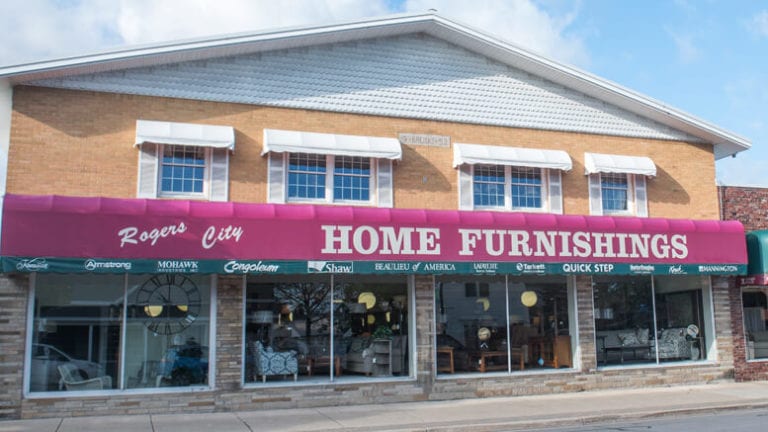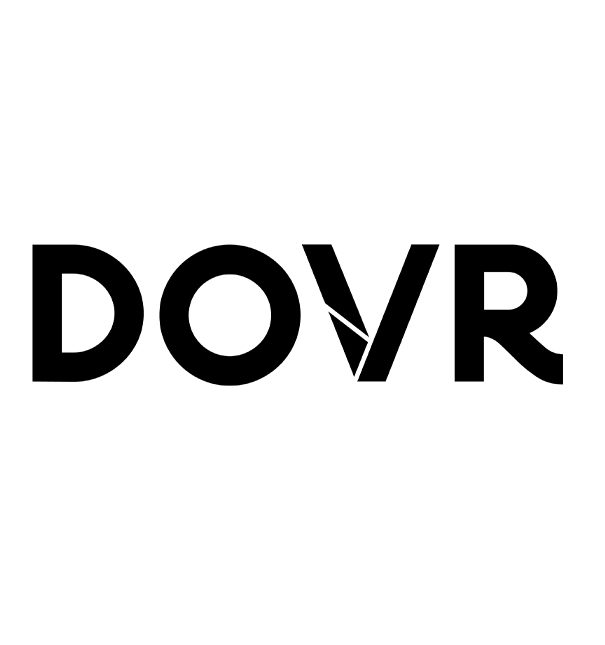Getting Your Numbers Right
Improvement in your furniture store starts with two things: Awareness and desire. The awareness of how you’re performing against standards allows you to understand your strengths and weaknesses. It’s through the measurement against these standards, or metrics, that you can find gaps. Knowing your gaps and then having the desire to create a strategy and act upon an improvement plan is what separates average business managers from top business managers.
To assist furniture store retailers in improving their individual operations, and for the good of the industry in general, we are publishing the financial portion of our performance observations during 2017.
Over the course of this past year, I reviewed a wide range of operations through our consulting and performance groups’ activities. In doing so, I established a set of metrics that I think are excellent for benchmarking average and high performers.
Below are the Profit and Loss (P&L) percentages observed during this time, and I follow it with my interpretation. These numbers are broken down by what is the commonly accepted P&L format among industry retailers, and the observations are expressed in three columns. The first two columns produce P&L’s averages, and the third is used to show the top percentages in select metrics. These are the three column groupings:
- Average performers
- Average of double-digit profit club (net income before tax) performers
- Average of top-tier performer for each metric (top ten-percenter suggestion)
The observations are expressed in terms of percentages of total retail sales volume. This allows for operations of different sizes to compare themselves using a “common size” format. For the purposes of compatibility, we excluded electronics and appliances merchandise from the metrics.
Financial Metric Interpretation:
So what do all these numbers mean to you and your business? Here are a few thoughts on how you can boost your bottom line.
Sales
Separating the percent of warranty and protection sales with respect to merchandise sales is now the accepted way of producing a P&L in the furniture store industry. This is due to the massive importance of increasing the proportion of warranty sales. They are typically the highest gross margin product that a furniture store retailer sells.
The range of average and double-digit operations in percent of warranty sales to total sales: 3.73 percent and 3.43 percent.
That may seem impressive, but compare those numbers to top-tier operations and they pale. Warranty sales in top-tier stores almost double these averages. Their customers spend 6 percent of their dollars—nearly twice as much!—on warranty and product protection. If you’re store is on the lower end of this metric, you might not be emphasizing warranty sales as much as you should.

Cost of Sales
This is a prime area where the double-digit profit club outpaces average performers.
With respect to cost of merchandise, double-digit profit operations had a 3-percent lower cost of goods percentage than an average operation. The top-tier performers actually had almost another 3-percent cost advantage over the double-digit profit operations at 47 percent. A similar pattern occurred with cost of warranties. Better operations are trained and follow systems to sell on value rather than sell on price, in my opinion. Here are some things to think about to help you and your store reduce cost of sales:
- Volume pricing
- Payment terms discounts
- Cost of warranties
- Product selection that is exclusive to local marketplace
- Minimal inventory shrinkage
Gross Margin

Gross margin percent of sales is just the inverse of cost of goods, meaning the operations with the lower cost have the highest margin.
This data supports the results from the prior two years of formal studies conducted with the Home Furnishings Association. Average performers show a 48.18 percent gross margin, the double-digit club gets almost 51 percent gross margin, and the top-tier performers achieve a whopping 55 percent.
These numbers are real, so wherever you are with your own gross margin, believe that you can improve. I’ve personally helped move this number with clients many times by more than 10 percent while simultaneously growing sales volume. Here are some tips to improve your store’s gross margin:
- Constant review of best-seller price points in your line-up
- Incentivizing high GM performance
- Price tags with a markup for long-term finance
- Maximizing protection sales
- Maximizing bedding sales
- Maintain a lean inventory so fewer mark-downs are needed
Gross Realized Margin
The generally accepted way of producing an industry P&L is showing a second gross margin line called Gross Realized Margin. This first lists the reduction of costs by vendor rebates and discounts incurred. Then, it increases cost of sales by finance and credit card fees.
This gives an alternate gross margin number as non-employee direct costs with purchasing the merchandise and making the sale considered.
There is a similar step-up in Gross Margin percent with the three groups observed. Before any operating costs are considered, an average operation has 45.91 percent of sales dollars left to produce a profit. The double-digit profit club has almost a 3-percent lead already in the race for net income.
Administrative Costs
You know all about administrative costs. They are the expenses your store incurs not directly tied to a specific function such as manufacturing, production or sales. Instead they include general overhead expenses such as office and owner payroll, training, legal, accounting, travel, meals and entertainment, markets, software, and all other items that do not fall under occupancy, advertising, selling, distribution or service.
We find that, on average, a furniture store spends about 12 percent of its sales volume on administration of the business.
We see a wide range with this metric. Often, this figure is affected by the number of store locations, the number of family members in the business, and, of course, by how lean an operation runs. The top-tier in this metric came to a very low 7 percent, which in fact may be a bit too low for some. I feel that if an operation is under 10 percent here and can manage its work properly, they are doing exceptionally well.
As tempting as it may be, some operations here do not want to be too low, as they feel they cannot provide properly for their employees. Certain owners feel it’s important to have a proper amount of spend in administrative areas such as healthcare, training and technology to remain competitive in the marketplace.
Occupancy Costs
Occupancy costs include all brick-and-mortar showroom facility expenses such as rent, loan expenses, real estate charges, maintenance and utilities.
This is typically one of the most fixed costs a brick-and-mortar retailer like yourself incurs, as it doesn’t change much from one month to the next. Whether sales go up or down, the rent, maintenance and utilities stay level dollar-wise. However, as a percentage, as sales grow these costs fall and result in a positive impact to the bottom-line net income. This is one of the reasons why high-performing sales floors produce so much more profit than average performers.
Average occupancy is 8.15 percent of sales. The double-digit profit club is 7.64 percent and the select top-tier performers in this metric are as low as 4 percent.
Advertising Expense
For an average furniture store, the advertising expense runs 5 to 6 percent of sales. Depending on the location, however, a profitable business could potentially spend up to 10 percent. I have seen higher, but I haven’t come across too many retailers who made much above that. Oftentimes, it’s good to consider occupancy and advertising expenses together percentage-wise. Whatever your mix, it’s best to keep the combined percentage under 15 percent of sales.
Selling Expenses
Selling expenses cover sales managers and sales people’s wages, bonuses, commissions and other payroll costs. Sales training, outside design contractors and point-of-sale material may all be included here as well.
I commonly see operations in the 5- to 10-percent range, which makes this 2017 data consistent. Average stores are at 9.21 percent, the double-digit club is at 7.84 percent and the top-tier in this metric is at 5 percent.
This cost should be one that is mostly variable. This means that when sales go up or down, selling costs should go up or down as a dollar amount and remain constant as a percentage. I do not mind if this cost is on the high side for any one client, as long as their GM percentage is also on the high side as well.
Customer Service Expense
This is a net percentage, representing all customer service costs that are related to solving issues with damaged and defective merchandise. It includes any dedicated employees as well as the cost of repair. Costs are reduced by any income or amounts in credit that are received back as compensation from vendors. A highly-functioning operation has very low service costs as a net percentage.
Delivery Income
This P&L breaks out delivery income as a separate line item from warehouse and delivery activities. It should be the goal of your store to collect an appropriate amount that covers the direct delivery-related expenses. Otherwise, delivery costs come straight out of gross margin dollars.
On average, furniture stores collect around 1.9 percent of sales in delivery income. That being said, the top-tier performers in this metric collect double that. Here are some suggestions to maximize delivery income:
- Set price at an amount that covers the cost of local delivery expense
- Have an additional charge for out of town delivery
- Consider a curb-side drop off option where customers don’t need set-up and don’t need to be home
- Always charge for delivery and set-up
- Monitor profit and loss of delivery on monthly financial statements
- Warehouse and Delivery Expense
- Warehouse and delivery expenses include all physical merchandise handling and logistics employees, as well as their operating facilities, equipment and any other resources they use.
- On average, operations spend 6.15 percent of sales here. The double-digit profit club uses 1.6 percent of sales less cash resources at 4.55 percent of sales. Top-tier performers are as low as 4 percent of sales. Here are some thoughts on trimming warehouse and delivery expenses:
- Focus on good processes. Manage the process rather than the person. Require people to execute the processes.
- Ensure there is tracking of inventory at every step. If you move it you scan it; 100% accuracy of inventory.
- Proper dock height is required for efficiency.
- Ample space for receiving and prepping is necessary.
- Enough racking space is required so merchandise is moved only for delivery or display.
- Minimize reverse logistics: merchandise coming into the DC from stores or from customers. The DC is for merchandise going out.
Total Operating Expenses
Total operating expenses add up all expenses that are reduced from Gross Realized Margin. It’s the total of administrative, occupancy, advertising, selling, service, delivery and warehousing expenses.
Whenever I see an in-control furniture store that’s running smoothly, without chaos, with an operation expense ratio under 40 percent of sales, I think potential gold mine.
Average performers are at 40.14 percent while the double-digit profit club is very lean at 36.2 percent. I don’t get alarmed when I encounter an operation at 42 or 43 percent, provided they are spending in areas that add value to their business and employees. I realize value is hard to quantify. To me, value means the employee is an “earner” not a “burner” of revenue. Of course, not everyone generates revenue. The employee can also provide critical support to allow the organization to produce revenue. Operations who are close to 50 percent in this metric are usually pulling out profit early or are running a broken business model.

Net Operating Income
This is the percent of every sales dollar that remains after all costs of goods and regular operating expenses are deducted from your store.
Average operations show 5.88 percent net operating income. The double-digit profit club has more than twice as much profit at 12.63 percent net operating income. And the select top-tier operations for this metric have 14 percent.
Net Income Before Tax
 Net income is the bottom-line with other non-operating income, non-operating expenses and interest expenses either added or deducted. Typically, there is little in either category except for operations that rent out parts of their facilities or operations that carry a large debt for which they pay significant interest.
Net income is the bottom-line with other non-operating income, non-operating expenses and interest expenses either added or deducted. Typically, there is little in either category except for operations that rent out parts of their facilities or operations that carry a large debt for which they pay significant interest.
Overall, the bottom line is not significantly different from net operating income.
Average operations show 5.67 percent net income before tax, double-digit profit club has 12.54 percent, and the select, top-tier, operations for this metric still have a 14 percent bottom line.
When I discuss improvement possibilities with furniture retailers, they are sometimes skeptical; they don’t believe me when I say they can grow gross margins by 8 percent of sales, grow profits by 7 percent of sales, increase sales volume by 25 percent or double their cash position. The opportunity for vast improvement exists for many – I’ve seen it happen time and time again and have been a part of it myself. I hope these metrics inspire you to look at your business analytically, and I hope you are motivated to take action to reach new heights that are well within your reach.
In our 2017 Retail Observations, we also looked at several selling and inventory metrics. Those will be made available in next month’s RetailerNOW.
Finally, for a limited time, we will be offering retailers an Opportunity Analyzer. You can get a customized, side-by-side comparison report with all these metrics, as well as a one-on-one web meeting. In your web meeting, we will present and discuss our observations and your opportunity.
Just contact me if you’re interested in getting guidance on improving your store’s profitability and cash flow.












